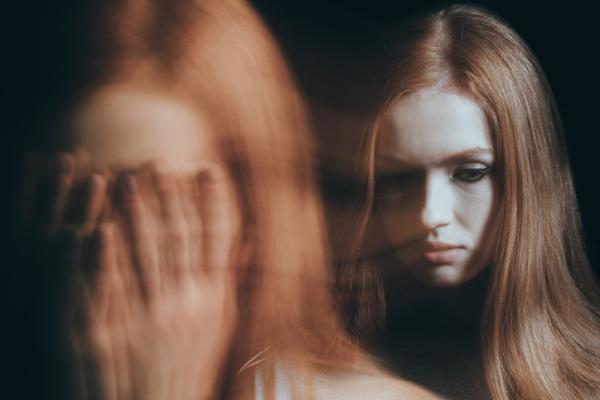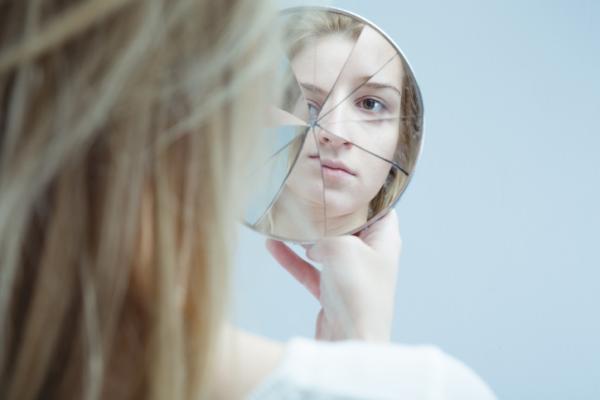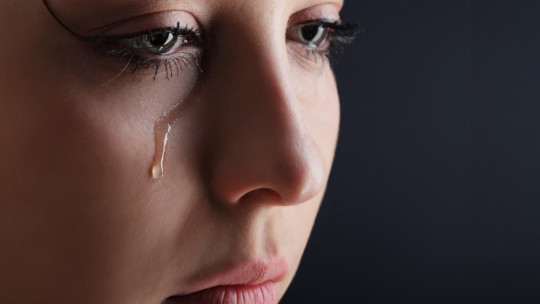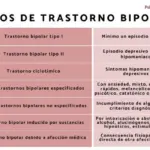
Bipolar disorders are classified as “Mood Disorders”. These are usually alternating, or mixed, hypomanic or depressive episodes or symptoms, which cause clinically significant discomfort or a deterioration in social, work or other important areas of the individual’s activity.
In this PsychologyOnline article, we will talk about Bipolar disorder, types and causes.
Diagnosis and types
A good diagnosis must be carried out to verify that it is not psychosis or schizophrenia. It is very important to specify if catatonic symptoms, of postpartum onset, are evident, in addition to the severity of the event (mild, moderate, severe, in partial or total remission); the length of episodes with a seasonal pattern or rapid cycles.
Within bipolar disorders, the “bipolar I disorder” used to designate only the first episode of mania, or the most recent bipolar episode of both hypomania and depression.
For other occasions we speak of “Bipolar II Disorder” considered when there is the presence or history of one or more major depressive or hypomanic episodes.
It is worth considering the “Cyclothymic disorder” which we can define as numerous periods of hypomanic symptoms and numerous periods of depressive symptoms that do not meet the criteria for a major depressive episode.
Mixed anxious-depressive disorder and diagnostic criteria
This category should be used when present symptoms of anxiety and depression but none of them clearly predominate or have sufficient intensity to justify a separate diagnosis. When both sets of symptoms (depressive and anxious) are present and are severe enough to justify an individual diagnosis, both disorders should be included and this category should not be used.
If for practical coding reasons only one diagnosis can be made, priority should be given to depression.
For a good diagnostic criterion of the Bipolar I disordersingle manic episode, the following symptoms must be taken into account.
- Presence of a single manic episode without major depressive episodes; relapse is sometimes defined as a change in polarity from depression, or as an interval of at least 2 months without manic symptoms.
- The manic episode is not better explained by the presence of a schizoaffective disorder and is not superimposed on schizophrenia, schizophreniform disorder, delusional disorder, or psychotic disorder not otherwise specified.
It is called mixed if the symptoms meet the criteria for a mixed episode.
- In the hypomanic episode, at least one manic episode or a mixed episode has previously occurred. Affective symptoms cause clinically significant distress or impairment in social, occupational, or other important areas of the individual’s activity; affective episodes are not better explained by the presence of a schizoaffective disorder and are not superimposed on schizophrenia, schizophreniform disorder. , a delusional disorder or an unspecified psychotic disorder.
For a good evaluation, you must specify:
- Longitudinal course specifications with and without interepisodic recovery.
- With seasonal pattern (only applicable to the pattern of major depressive episodes) and with rapid cycles.
For good criteria in the diagnosis of bipolar II disorder The presence or history of one or more major depressive episodes must be taken into account. Presence or history of at least one hypomanic episode. The symptoms cause clinically significant distress or impairment in social/occupational or other important areas of the individual’s functioning.
For good criteria in the diagnosis of Cyclothymic disorder The presence, for at least 2 years, of numerous periods of hypomanic symptoms and numerous periods of depressive symptoms that do not meet the criteria for a major depressive episode must be taken into account. (In children and adolescents the duration must be at least 1 year).
During the period of more than 2 years (1 year in children and adolescents) the person has not stopped presenting symptoms of hypomania for a period of more than 2 months, in addition there must not have been any episode of major depression, manic episode or mixed episode.
After the initial 2 years of cyclothymic disorder, manic or mixed episodes may occur superimposed on the cyclothymic disorder (in which case cyclothymic disorder and bipolar I disorder are diagnosed). If major depressive disorders occur, bipolar II disorder and cyclothymic disorder are diagnosed.
The symptoms are not in these cases due to the direct physiological effects of substances such as drugs or medications or any medical disease such as hyperthyroidism. In cyclothymic disorder, the symptoms cause clinically significant distress or impairment in social, occupational, or other important areas of the individual’s functioning.
In bipolar disorders the patient retains the level of consciousness in most casesThere is a form of mania (confusing mania) with symptoms of delirium that poses difficulties in diagnosis.
Some patients may present hypermnesia for remote events, but it is more frequent memory symptomsespecially in short-term memory.
Some bipolar patients may present residual cognitive dysfunctions, even after remission of the acute phase. A large number of patients with bipolar disorder usually present insomnia (decreased need for sleep) as well as increased hunger and thirst. They usually present hyperactivity.
The bipolar patient usually rejects being sick, especially in episodes of mania. This is why psychoeducation is positive when the patient is in remission.

Psychodynamism
According to Freud, mania is victory of I over the objectMany psychoanalytic authors highlighted in manic-depressive psychoses the mania as the reaction to melancholia. The main defense mechanism used by the manic patient is denial of the ego’s need for self-defense.
Genetic factors
Studies carried out in endocrinology in bipolar patients have provided knowledge in the pathophysiology of affective disorders. Hypothyroidism is frequently clinically associated with depression, however endogenous or exogenous hyperthyroidism is usually associated with maniform reactions.
Depression and mania have been observed in patients with Cushing.
Recent studies have contemplated region 16 of the long arm of chromosome 4, a combination of loci chromosomes 6, 13 and 15 co-responsible for the transmission of vulnerability to the disorder.
Through epidemiological studies in concordance of monozogotic and heterozygotic twins, genetic factors demonstrate the etiopathogenesis in these disorders.
Therefore, genetic factors participate in the etiopathogenesis of the disease and in its clinical expression as well as its course.
In biological factors the norepinephrine It is fundamentally the common neurotransmitter in unipolar depressions and bipolar disorders, although some studies have shown a lower number of metabolites in unipolar depressive patients than in bipolar patients.
In treatments associated with endocrine pathology (hypothyroidism), corticosteroids sometimes cause depressive and manic complications and even rapid cycles.
In certain cases it is advisable to carry out a evaluation of thyroid status, since in high cases they present subclinical hypothyroidism. It has been observed that in patients who have not responded to conventional treatments and who do not present hypothyroidism, thyroxine in high doses has given effective results in rapidly cycling bipolar patients.

Treatment and psychotropic drugs
Some patients classified as bipolar type II in which the symptoms are Seasonal Affective Disorder (due to presenting depression in autumn-winter and hypomania in spring-summer) have responded favorably to phototherapy since in many cases melatonin is related to this type of disorders and the inhibition of its production favors improvement in this condition.
Within the manic phase bipolar disorder, the treatment possibilities are usually more complex, not advising outpatient treatments and requiring in many cases hospitalization.
The treatment considered to be of choice in this clinic is usually lithium, although its action is slow. To avoid the patient’s significant psychomotor restlessness, antipsychotic drugs are usually added, which must be administered in low doses and not for a long time to avoid a shift towards depression.
It has been shown that it is preferable to use benzodiazepines with antimanic action (clonazepam).
The ideal serum levels in lithium treatment are between 0.8 and 1.2 mEq/l, it is important to keep in mind that patients usually stop treatment when they feel well.
As a compensatory measure and especially in rapid cyclers, treatments with carbamazepine or valproic acid, if treated with these drugs, results are usually obtained whether or not in combination with lithium.
In depressive relapses, treatment only with antidepressants, in many cases it does not produce the expected results that are obtained with lithium. Although in type II bipolar patients an improvement in response has been observed as prophylaxis. One of the alternatives is lanvotrigine.
It has been shown that in acute episodes, treatments with valporate At levels between 45 and 125 mg/ml they give good results. Carbamazepine and valproic acid also give very effective results to patients whose disease has had an organic cause.
It is noteworthy that recently, for the treatment of mania, some medications with antipsychotic properties such as clozapine, risperidone, olanzapine and ziparidone In doses between 80/100 mg, they are also effective.
Quetiapine and ariprinpazole are being studied and are expected to obtain good results in the future.
It is a good contribution to the patient accompany with psychotherapy pharmacological treatments which help the patient to become aware of the disease.
This article is merely informative, at PsychologyFor we do not have the power to make a diagnosis or recommend a treatment. We invite you to go to a psychologist to treat your particular case.
If you want to read more articles similar to Bipolar disorder, types and causes we recommend that you enter our Clinical Psychology category.








